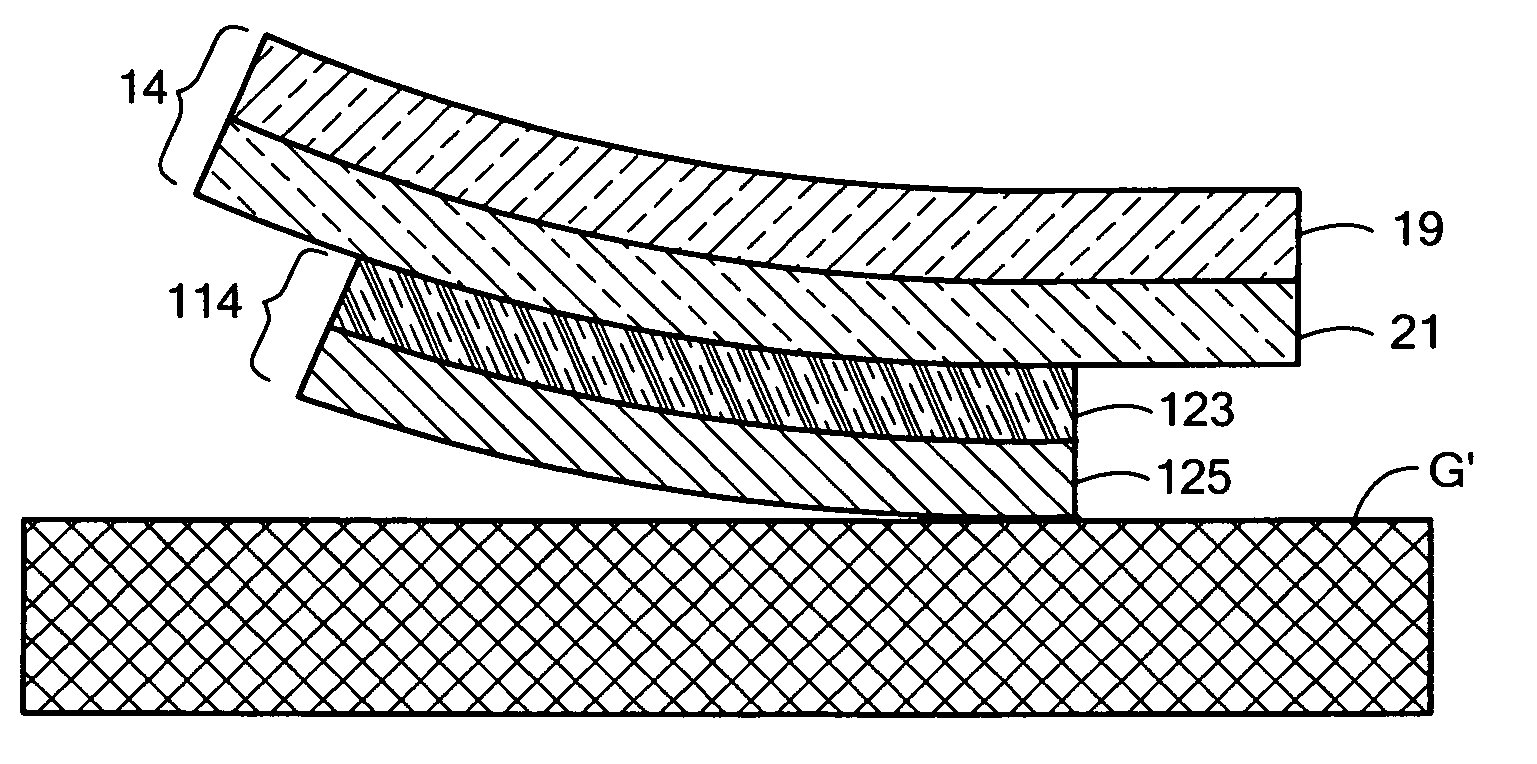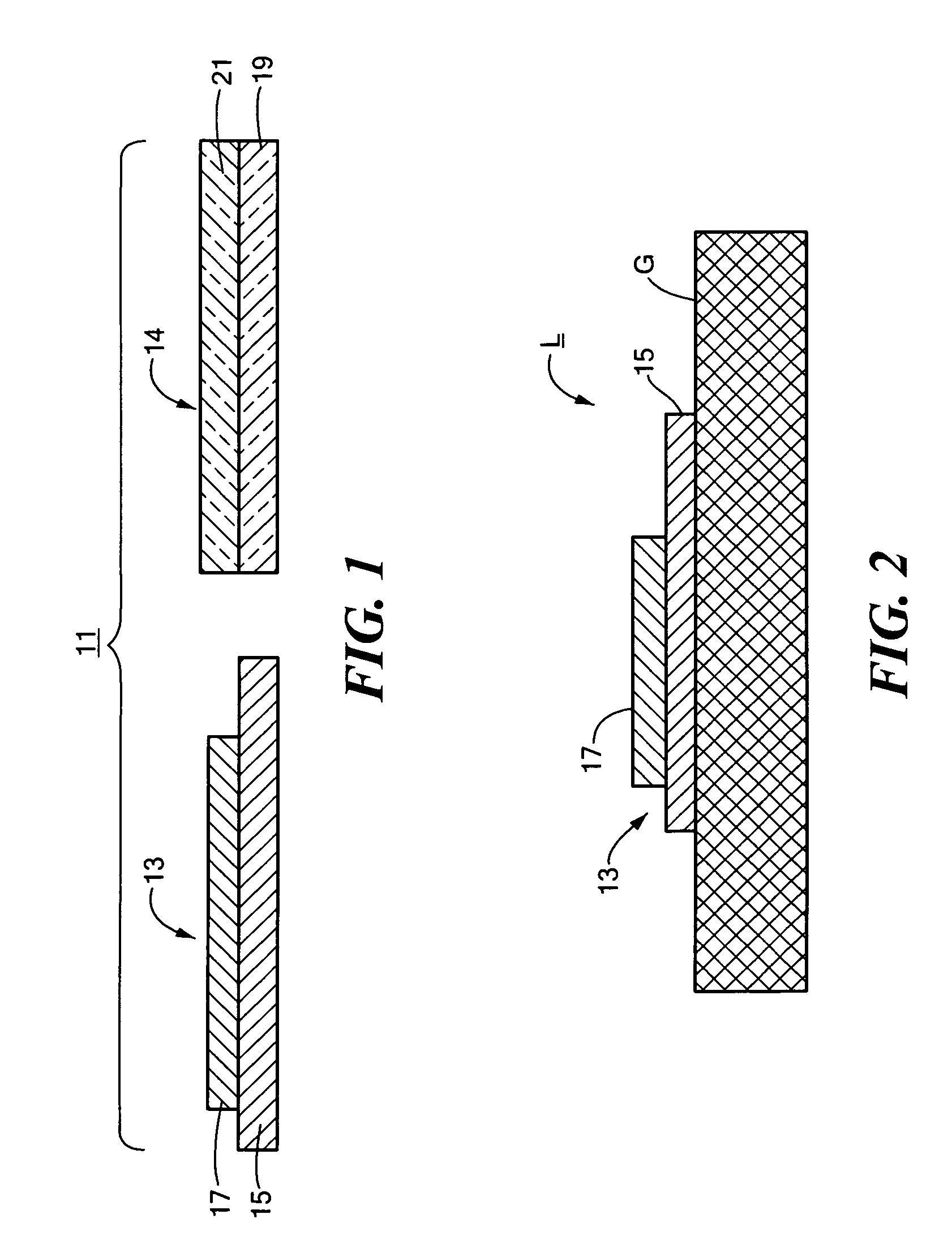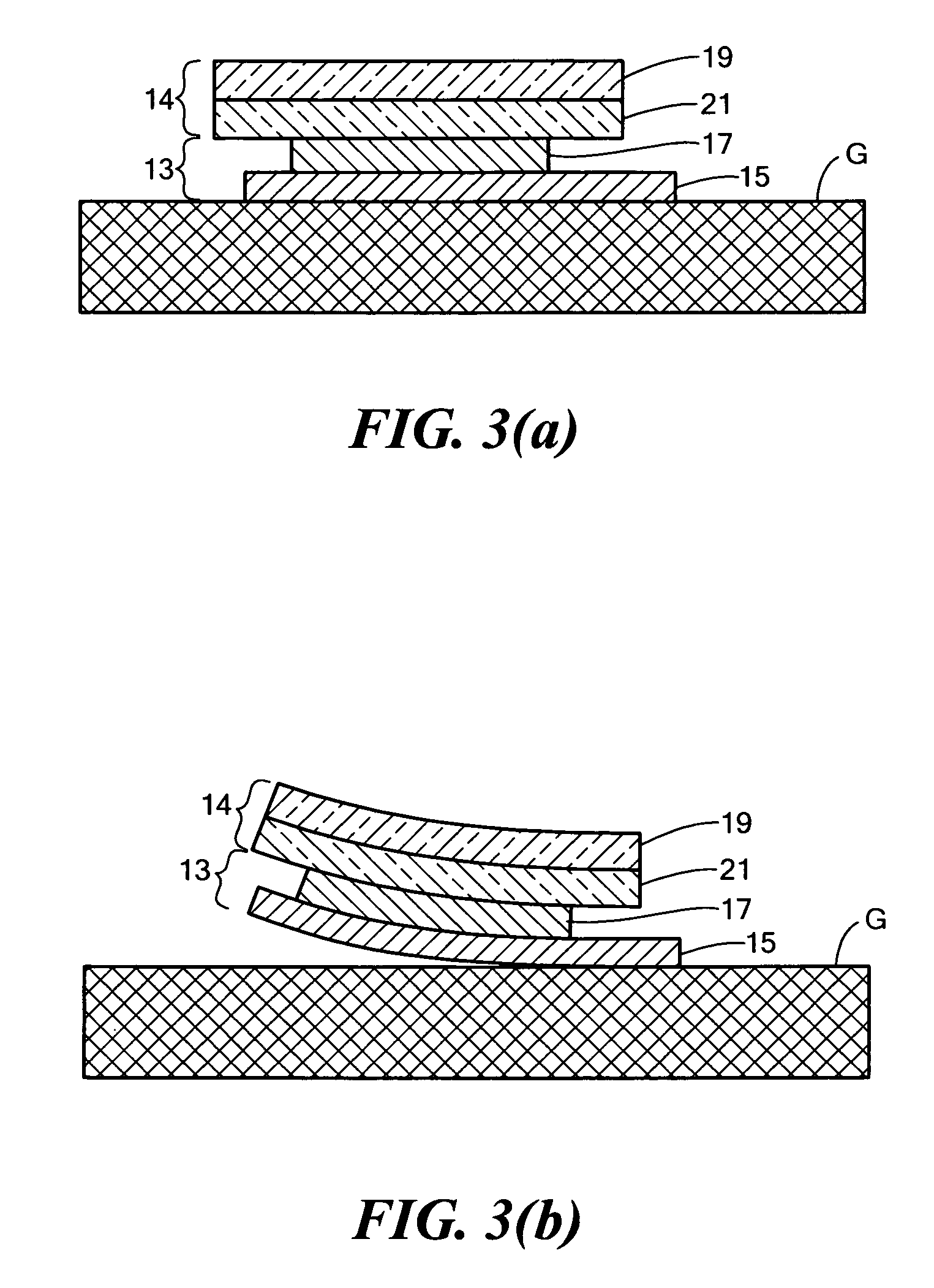Label assembly and method of using the same to label articles durably yet removably
a label and removable technology, applied in the field of labeling of articles, can solve the problems of affecting the wearer, loss of the information contained on the label, and significant damage to the garment,
- Summary
- Abstract
- Description
- Claims
- Application Information
AI Technical Summary
Benefits of technology
Problems solved by technology
Method used
Image
Examples
example 1
[0164]An image removing laminate having a construction similar to that of image removing laminate 41 was prepared as follows: First, a polyethylene terephthalate (PET) film was coated with a 50 micron layer of Sancure 835 polyurethane dispersion (Noveon Corp., Cleveland, Ohio). Next, the coating was dried by heating the coated product in an oven at 120° C. for 3 minutes. Next, a PVC plastisol prepared by combining 100 g of Geon 137 PVC resin (PolyOne Corp., Avon Lake, Ohio), 55 g of dioctyl phthalate plasticizer (ChemCentral, Bedford, Ill.) and 55 g of Santicizer 160 plasticizer (Ferro Corp., Cleveland, Ohio) was coated on top of the above-described Sancure 835 coating. The plastisol was then fused by heating the coated product at 120° C. for 3 minutes.
[0165]An image forming laminate having a construction similar to that of image forming laminate 211 was prepared as follows: First, a wax formulation consisting of 1350 parts Acumist D5 powdered wax (Honeywell Corp., Morristown, N.J.)...
example 2
[0169]An image forming laminate having a construction similar to that of image forming laminate 111 was prepared as follows: First, a protective plastisol consisting of 60 parts Geon 137 PVC resin, 33 parts dioctyl phthalate and 33 parts Santicizer 160 plasticizer was printed onto the release-coated side of a Mylar® A701 film (DuPont Teijin Films, Hopewell, Va.). The printed product was then dried in an oven. Next, a blue plastisol ink formulation consisting of 720 parts Geon 137 PVC resin, 350 parts dioctyl phthalate, 350 parts Santicizer 160 plasticizer, 140 parts Violet PC (Polyone, Avon Lake, Ohio), 77.4 parts Blue PC (PolyOne, Avon Lake, Ohio), and 25.2 parts Bright Yellow PC (Polyone, Avon Lake, Ohio) was printed onto the protective layer. The printed product was then dried in an oven. All of the above printing steps were performed using a Galaxy 2000 screen printer (Smag Graphique, Savigny-Sur-Orge Cedex, France).
[0170]The above-described image forming laminate was then place...
example 3
[0172]An image forming laminate having a construction similar to that of image forming laminate 311 was prepared as follows: First, a wax formulation of the type described in Example 1 was printed onto the release-coated side of a Mylar® A701 film (DuPont Teijin Films, Hopewell, Va.), and the resulting product was dried in an oven. Next, a protective plastisol formulation of the type described in Example 2 was printed onto the above-described wax layer, and the resulting product was dried in an oven. Next, a blue plastisol ink formulation of the type described in Example 2 was printed onto the above-described protective layer, and the resulting product was dried in an oven. Finally, a thin layer of the above-described protective plastisol formulation was printed onto the above-described ink layer to form a spacer layer, and the resulting product was dried in an oven. All of the above printing steps were performed using a Galaxy 2000 screen printer (Smag Graphique, Savigny-Sur-Orge C...
PUM
| Property | Measurement | Unit |
|---|---|---|
| surface roughness | aaaaa | aaaaa |
| thickness | aaaaa | aaaaa |
| thickness | aaaaa | aaaaa |
Abstract
Description
Claims
Application Information
 Login to View More
Login to View More - R&D
- Intellectual Property
- Life Sciences
- Materials
- Tech Scout
- Unparalleled Data Quality
- Higher Quality Content
- 60% Fewer Hallucinations
Browse by: Latest US Patents, China's latest patents, Technical Efficacy Thesaurus, Application Domain, Technology Topic, Popular Technical Reports.
© 2025 PatSnap. All rights reserved.Legal|Privacy policy|Modern Slavery Act Transparency Statement|Sitemap|About US| Contact US: help@patsnap.com



